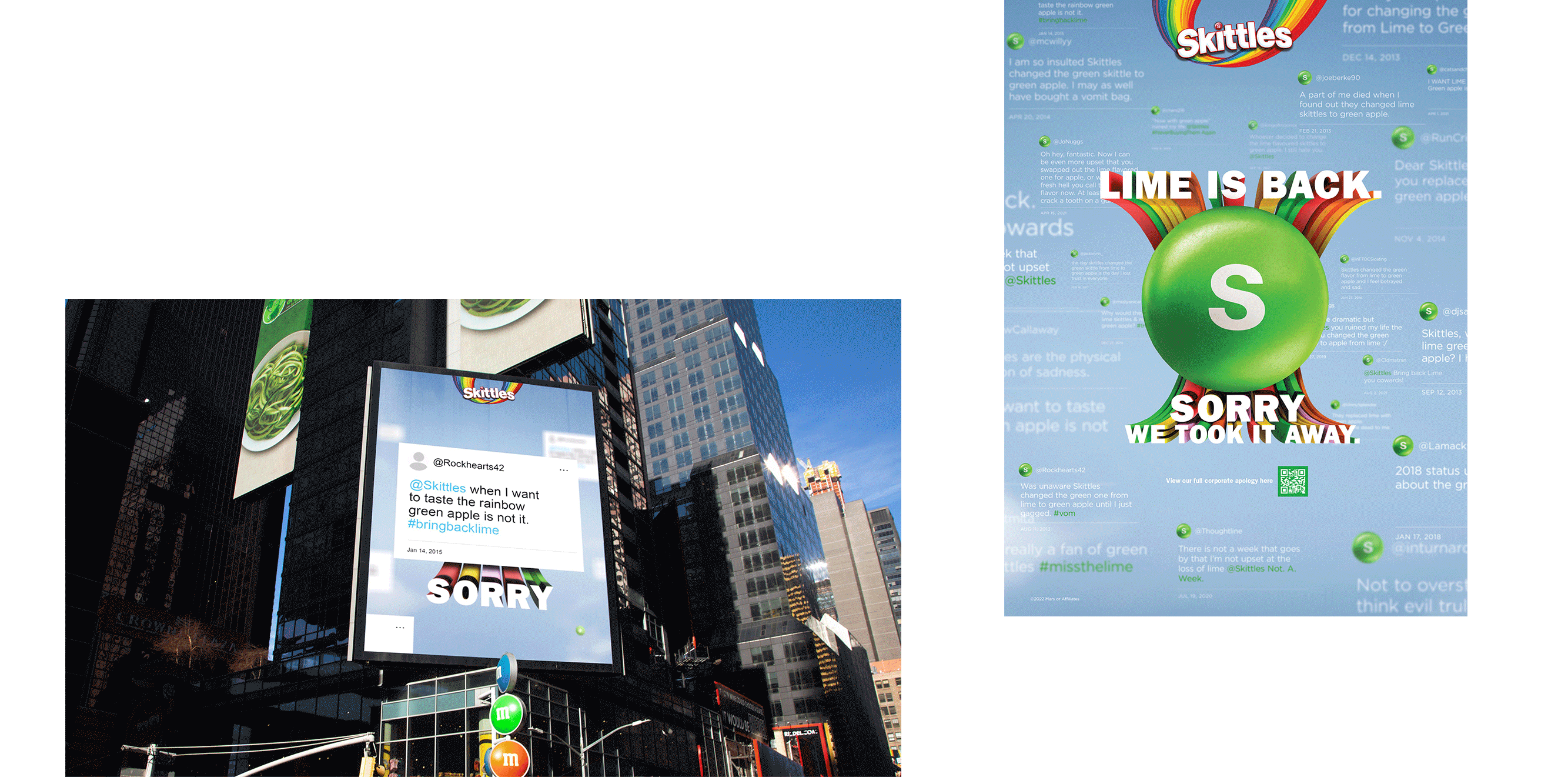With the year almost done, it’s time to look forward to 2024. In a digital world dominated by Gen Z and Gen Alpha, the landscape of brand marketing is undergoing a profound transformation. In this 2024 trend report, we explore five behavioral and cultural trends reshaping how brands interact with these communities.
Embracing this shift means prioritizing substance over style, as authenticity and transparency take precedence over vanity metrics. So bye bye shallow follows & useless likes. Finally! Gen Alpha and Z's critical eye for purpose-driven marketing demands a commitment to social responsibility. As privacy concerns rise, we delve into the challenges posed by ad blockers and how marketers can adapt.
Moreover, the preference for platforms like TikTok and Instagram as search engines underscores the need for innovative content strategies. We also emphasize the growing importance of hyper-local and geotargeted marketing tailored to diverse communities and driven from within.
Join us in reimagining marketing strategies as we navigate this dynamic landscape, evolving our thinking, behavior, and campaign tactics to resonate with Gen Alpha & Z's evolving expectations and values.
TRANSPARENCY IS YOUR ONLY CURRENCY.
Brand transparency is no longer an option, it’s a must. Especially for Gen Alpha & Z.
In the lively realm of digital marketing, trust is the name of the game. Just as in personal relationships, brands and their communities thrive on trust. The secret sauce behind loyalty and engagement. This trust is even more critical when targeting Gen Alpha & Z, often referred to as the purpose-driven generations. They value brand transparency and a clear sense of purpose.

When these generations encounter a misleading or dishonest brand, many will take it to social media to share their frustrations with their followers, extending their reach to a broad online audience. Picture it like dining in a restaurant with an open kitchen. It’s not enough to see the plate, you want to see the chef too.
Now, trust can be as delicate as a soap bubble, but it's worth the effort. Smart brands, aiming for a devoted following, are doubling down on transparency. What's the twist? Negative reviews are not the villains they seem. In fact, they're the unsung heroes, especially for smaller businesses.
These negative reviews contribute to a growing repository of reviews, boosting a company's credibility and SEO. Surprisingly, they count just as much as positive ones. Moreover, they're like secret agents, uncovering hidden issues and offering valuable insights for product innovation and business ideas, enhancing conversion rates. Free market research, anyone?
Negative reviews can cut through the social media clutter, catching the eye of your audience. They can even serve as a launchpad for new products and features, adding excitement to your social strategy. Moreover, they offer a golden opportunity for businesses to showcase their top-notch customer service, proving their care and commitment in the world of digital marketing.
A good example of this can be found in the 'Skittles: Apologize the rainbow' case. In an amusing and lighthearted manner, Skittles issued a heartfelt apology after discontinuing their lime flavor, showcasing their unwavering commitment to preserving consumer loyalty and trust. In this way, they were able to turn a critical situation into a real growth opportunity.

STOP WITH THE LIKES. LIKE, RIGHT NOW.
Vanity metrics: The numbers we hate to love.
Vanity metrics, those alluring figures that might inflate your ego but do little to aid your community’s decision-making or drive business. They're the kind of statistics that consistently soar skyward, rendering them visually pleasing on a graph but fundamentally ineffectual in guiding your strategy or acquiring meaningful insights.

In essence, these vanity metrics lack the power to influence your actions. This leads us to a fundamental principle in the world of metrics: "If a metric can't drive a change in your behavior, it's an ineffective metric."
Consider, for instance, the number of social media followers or the quantity of likes on a post. These are classic examples of vanity metrics because they don't truly reflect genuine engagement or value. You might amass an army of social media followers or garner numerous likes, but if these individuals fail to take any consequential actions afterward, their significance diminishes.
So, what distinguishes a worthy metric? A valuable metric possesses four essential attributes:
- It is easily comprehensible and trackable by all.
- It allows for comparisons, typically over time periods.
- When expressed as a ratio or rate, it gains even more significance.
- It has the potential to instigate behavioral changes.
Imagine scrutinizing a metric and contemplating, "If this metric rises, remains steady, or declines, what different actions would I take?" — then if you’d change nothing, shift your focus away from this metric, because it’s vanity - not sanity.
YA BLOCKED!
The ad blocker dilemma: What brands need to know.
In recent years, the digital marketing landscape has undergone significant transformations, from the introduction of new iOS updates and the new GA4 to changes in attribution models and the resurgence of MMM (media mix modeling). A notable change in online behavior is the increasing use of ad blockers.
According to Backlingo, a staggering 42.7% of internet users worldwide now use ad blockers, with the Benelux region experiencing a remarkable increase (+130%) in search topics related to ad blockers over the past five years.
Users install ad blockers mainly due to privacy concerns and a desire for a faster, less intrusive browsing experience. While ad blockers bring significant benefits for users, they pose substantial challenges for brands advertising online.
These tools hinder our ability to track user information for personalized advertising and analytics, resulting in a drop in revenue streams and a disconnection from our target communities. However, it's not all negative – there are effective strategies to navigate this ad blocker challenge.

Work with first-party data: Directly obtained from your website or app, first-party data is less impacted by ad blockers as it doesn't rely on third-party cookies.
Implement server-side tagging: This method helps collect data without being hindered by client-side ad blockers.
Dynamic URL and subdomain changes: Ad blockers often target known tracking domains and scripts. Frequent changes to the URLs and subdomains used for tracking can reduce the chances of your scripts being blocked.
Consider implementing anti-adblock scripts: These scripts detect the presence of ad blockers and prompt users to disable them or whitelist your site to access content.
Explore alternatives: Native advertising, influencer marketing, and content marketing are quality-focused approaches that prioritize user experience, offering creativity and are less likely to be blocked. These methods can effectively draw users towards a brand in a more meaningful way.
DON’T SEARCH. ENTERTAIN.
Google is losing to TikTok in the battle for Gen Z & future Gen Alpha.
During a conference in July 2022, Google's senior vice president, Prabhakar Raghavan, mentioned that almost 40% of young people are moving away from using Google Maps or Search for finding lunch spots. This shift shows a broader change in how people look for information, with TikTok and Instagram becoming popular choices. (TechCrunch)
This new way of searching isn't just about finding products or businesses. It includes exploring 'how-to' guides and understanding various concepts. TikTok's short videos, usually under 60 seconds, give quick and relevant responses, catching the attention of many users. The growing importance of TikTok and Instagram as unique search engines shows how digital search is changing, driven by what younger communities prefer.

Our approach to ‘digital search’ aligns with this changing landscape, witnessing a surge in young individuals turning to TikTok and Instagram for information and recommendations. At oona, we leverage our extensive experience in crafting communication strategies that effectively & efficiently reach Generation Alpha & Z. For our clients, we've successfully utilized TikTok and Instagram as unconventional search engines, engaging the elusive Gen Alpha & Z communities. To grab their attention in search, you need to understand that there’s not just one Gen Z - there’s thousands. All connected but still very different. By having a community-first approach to search, you can tailor your brand towards your community's wants & needs.
GO LOCO FOR LOCAL.
Getting personal in marketing: unlocking community connections for business growth.
Hyperlocal strategies are a strong way for businesses to connect closely with their communities. It's more than just targeting people based on where they live. It's about creating personalized experiences that match their interests and lifestyles.
To forge meaningful connections, businesses can actively engage in creating hyperlocal content tailored to address the specific needs of the community. This involves not only understanding the unique characteristics of the local audience but also collaborating with influential figures within the community. By partnering with local influencers and key opinion leaders, businesses can amplify their reach and resonance, tapping into the trust and credibility these individuals hold within the community. This collaborative approach ensures that the hyperlocal content is not only relevant but also authentic, effectively bridging the gap between the brand and its local audience.
In the case of Cheeses of Switzerland, a pop-up croque monsieur restaurant in collaboration with local chefs and cheese masters served as a compelling case of how hyperlocal marketing can engage the foodie communities all over Belgium. The essence of hyperlocal marketing lies in embracing technology, personalization, consistency, and a data-driven approach to connect with the local audience effectively.

Another effective tool is geotargeting, which lets businesses reach customers based on where they are physically. For example, companies like TADAAM use hyperlocal campaigns to offer solutions in areas with poor cable connections. In the case of Cheeses of Switzerland, collaborating on a pop-up croquette bar with local chefs and cheese masters is a great example of how hyperlocal marketing can engage foodie communities in Belgium. Hyperlocal marketing's success relies on using technology smartly, sending personalized messages, maintaining consistent branding, and using data-driven insights to connect effectively with local audiences.
This trend is not just a passing fad; it's a powerful approach that recognizes the uniqueness of local communities and leverages them. As we can see with the Cheesy pop-up bar, hyperlocal marketing can have a broad impact. Driving brand visibility and engagement further than its geographical limits, and ultimately propelling businesses toward success in their respective markets.



